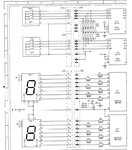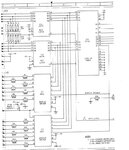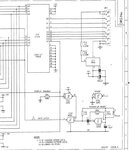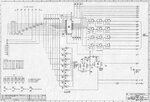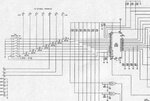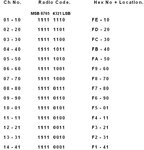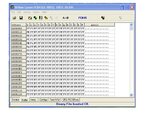tait 700
Junior Member level 2
Hello,
Was wondering if someone that has had some experience in creating a BIN or HEX file suitable for a 27C64 Eprom could point me in the right direction re creating a file that would allow the above Eprom to control the output of its data lines ( D0 - D7 ) so that it will switch the lines either high or Low i.e pull to ground ?
The device is a Remote Channel Change module for a Repeater rack and allows remote selection of channels in the TX and Rx modules by pulling various data lines in the same chip installed in the modules either high or low depending on the channel selected.
The Eprom in the Channel Change is addressed by a Two digit BCD selectable switch that is paired to a Two digit 7 seg LED that indicates the channel selected and this tells the Eprom which radio Channel to select via a combination of the Data Out lines.
I have a circuit Diagram of the unit and the input to the Eprom is already there with the BCD switching done by a pair of 40175 chips.
I have the Eproms for the TX and RX modules correctly burned with programming files provided by the equipment manufacturer ( Tait ) but i am lost as to how to create a BIN or Hex file from scratch to get the Channel Change Eprom to output the correct switching via its Data out lines.
Apologies for the long first post but if anyone could point me the right direction as to how to create this file i would be most grateful before i wear out my UV Eraser or the Spare Eproms i have been using to test the files :???:
Regards,
Was wondering if someone that has had some experience in creating a BIN or HEX file suitable for a 27C64 Eprom could point me in the right direction re creating a file that would allow the above Eprom to control the output of its data lines ( D0 - D7 ) so that it will switch the lines either high or Low i.e pull to ground ?
The device is a Remote Channel Change module for a Repeater rack and allows remote selection of channels in the TX and Rx modules by pulling various data lines in the same chip installed in the modules either high or low depending on the channel selected.
The Eprom in the Channel Change is addressed by a Two digit BCD selectable switch that is paired to a Two digit 7 seg LED that indicates the channel selected and this tells the Eprom which radio Channel to select via a combination of the Data Out lines.
I have a circuit Diagram of the unit and the input to the Eprom is already there with the BCD switching done by a pair of 40175 chips.
I have the Eproms for the TX and RX modules correctly burned with programming files provided by the equipment manufacturer ( Tait ) but i am lost as to how to create a BIN or Hex file from scratch to get the Channel Change Eprom to output the correct switching via its Data out lines.
Apologies for the long first post but if anyone could point me the right direction as to how to create this file i would be most grateful before i wear out my UV Eraser or the Spare Eproms i have been using to test the files :???:
Regards,
